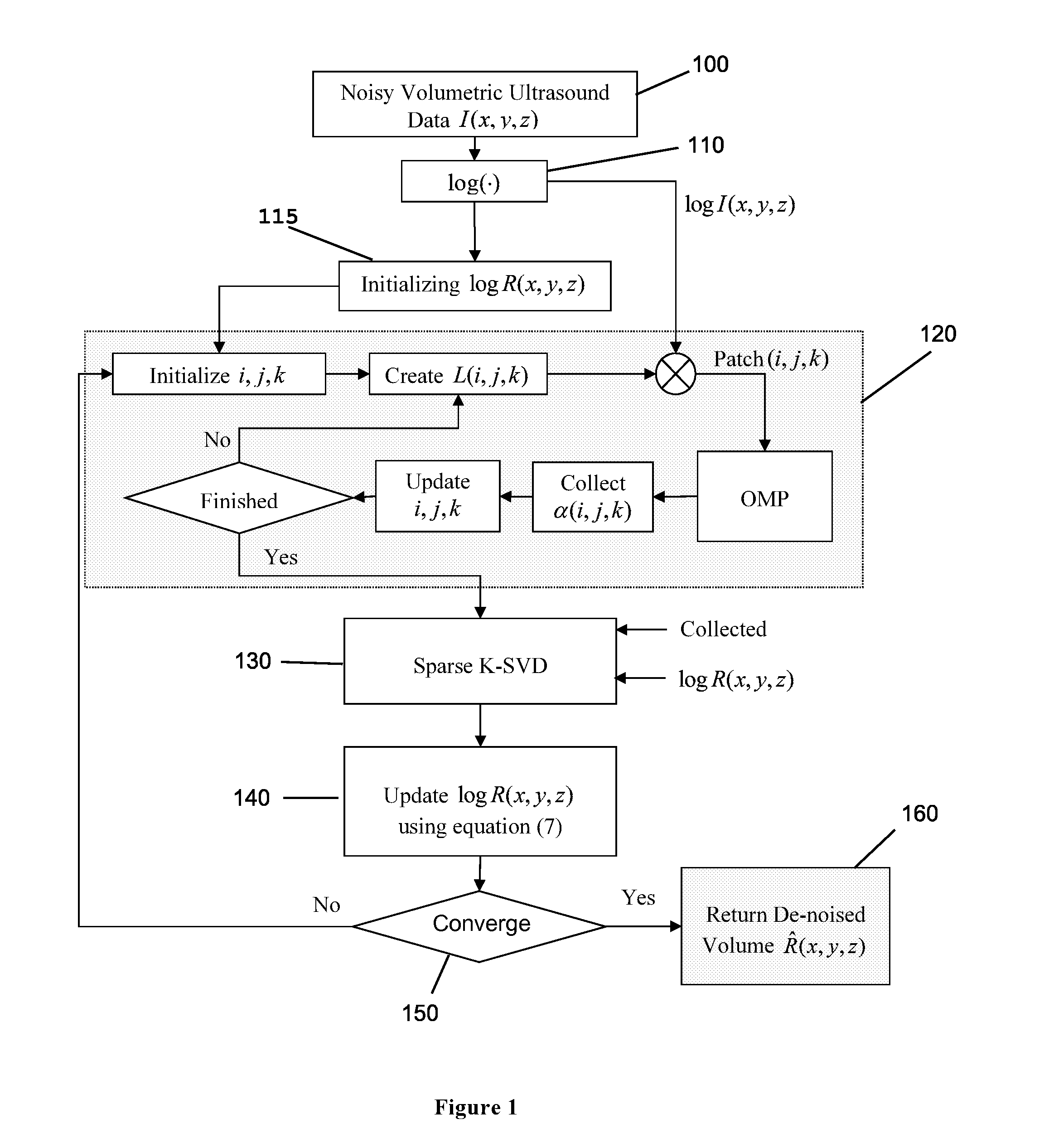Computer aided diagnosis for detecting abdominal bleeding with 3D ultrasound imaging
- Summary
- Abstract
- Description
- Claims
- Application Information
AI Technical Summary
Benefits of technology
Problems solved by technology
Method used
Image
Examples
Embodiment Construction
[0036]The task of object detection in 3D medical images has been investigated by researchers, due to its implications for medical diagnosis. The procedural steps of object detection in 3D volumes consist of preprocessing tasks, manual adjustment, 3D segmentation and classification. The aim of the preprocessing tasks is to put more emphasis on valuable information and to reduce the effect of unwanted interfering signals. Some examples of such tasks are denoising, edge refinement, contrast enhancement and volume clipping. As a second step, user intervention can be applied to boost the segmentation results. The 3D segmentation task can be considered to be the main part of an anatomical organ detection procedure. The selected 3D segmentation method for ultrasound volumes has to be robust against intensity variability, speckle noise and discontinuities among object walls. Finally, the classification step labels the segmented region as internal bleeding area, kidney, liver or other organs...
PUM
 Login to View More
Login to View More Abstract
Description
Claims
Application Information
 Login to View More
Login to View More - R&D
- Intellectual Property
- Life Sciences
- Materials
- Tech Scout
- Unparalleled Data Quality
- Higher Quality Content
- 60% Fewer Hallucinations
Browse by: Latest US Patents, China's latest patents, Technical Efficacy Thesaurus, Application Domain, Technology Topic, Popular Technical Reports.
© 2025 PatSnap. All rights reserved.Legal|Privacy policy|Modern Slavery Act Transparency Statement|Sitemap|About US| Contact US: help@patsnap.com



